Are you finding spots or puddles of urine on your floors? Don’t just assume your companion has forgotten his house training. It could be urinary incontinence, which can range from a little leakage to a large puddle on the floor. Dogs with urinary incontinence often lick their genitalia, and have irritated, red or raw skin from urine scalding. Unlike marking behavior or loss of house training, urinary incontinence is an unconscious act, in other words, the animal does not know it is happening. Many times, you”ll find their bed or other areas where they sleep wet and contaminated with urine. Incontinence has a number of causes and here are the most common ones.
- Urinary Tract Infections: If your pet has a bladder infection, they may not be able to control when and where urination occurs. The infection irritates the bladder and causes what is known as urge incontinence. The urge to go is so strong that the animal has trouble controlling it and may not get outside in time. Urge incontinence is triggered by bladder spasms caused by the infection. The animal realizes they have to urinate, but the urge is so strong that they can’t control it. Treating the infection will eliminate this type of incontinence.
- Hormonal Imbalance or Deficiency: Hormonal incontinence occurs in dogs of both sexes, but is most common in older, female spayed dogs. It’s the most common type of incontinence seen in dogs. They urinate normally when they are awake, but leak urine when they sleep. It can occur months to years after spaying surgery.
- Bladder Stones: If a dog has bladder stones, it can appear as if they are incontinent when they actually have a partial blockage of the urethra (the bladder outflow tract). The bladder can get so large that the pressure causes urination to occur around the blockage. A very large bladder can be palpated on physical examination.
- Neurological Problems: If a dog has a disc problem in the lower back that’s interfering with the nerves to the bladder, it can cause the bladder to lose tone , producing a consistent leakage of urine. A tumor or lesion in the brain could cause this as well. Generally, with a disc prolapse, there are other neurological signs such as paralysis or muscle weakness in addition to the continence.
- Prostrate Problems: Older male dogs can suffer from enlarged prostrates or prostrate cancer. If the dog is an intact, older male, hormones can cause the prostrate to enlarge and press on the urethra. This acts like an obstruction and prevents urination. The dog frequently drips a small amount of bloody urine. Prostrate cancer can have similar symptoms but also effects the spine, so he may have difficulty ambulating as well.
- Weak Bladder Sphincter: As dogs age they develop weak muscles. This includes the muscles of the bladder sphincter, which keeps the urine in the bladder. When the animal has a full bladder, it presses on the weakened sphincter and results in continence.
- Congenital Problems: Incontinence in young dogs often arises from a congenital problem or birth defect. The most common problem is ectopic ureter. The ureter is the tube that carries urine from the kidneys to the bladder. If this tube is abnormally connected to the vagina or urethra, the urine will constantly leak out instead of filling the bladder. This condition is most common in female dogs. Breeds most often affected are Siberian Huskies, Poodle, Labrador Retriever, Collie, Corgi and Fox Terrier. Surgery is needed to correct this problem.


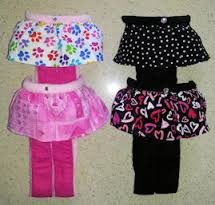
For dogs with incontinence there are several products you can use on the market today to help prevent urine from leaking onto your floors, carpets and furniture. One I have used on my senior dogs is the belly band. They are marketed for both males and females. It’s a good idea to order two bands so when one gets soiled and needs to be washed you have another one handy. You place a sanitary pad inside the band. You want to make sure you use a pad that is designed to pull moisture away from the area to keep your pet both dry and clean. I prefer the Tena brand of pads and they can be purchased at your local grocery or drug store. Belly Bands are soft and comfortable and do not squeeze your dogs private parts. They are made with fleece and cotton so they are hand and machine washable and dryable. The bands adjust in size at the waist and are attached by a velcro strip on both sides. There is a hole cut out for the dog’s tail. Both the girl and boy bands come in cute colors and styles, with the girls having alittle skirt on the top.
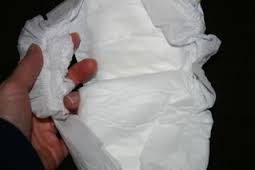
I have tried the plastic, disposable dog diapers but they do not stay on nearly as well as the belly band. They fall off very easily.
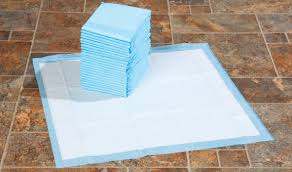
 I do still use pee pads in addition to the belly band because at times the sanitary pad gets too soaked and there could be a overflow of urine. They come in both disposable pads and washable pads and are offered in a variety of sizes.
I do still use pee pads in addition to the belly band because at times the sanitary pad gets too soaked and there could be a overflow of urine. They come in both disposable pads and washable pads and are offered in a variety of sizes.
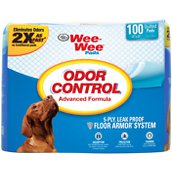 Some pads have odor control built in. They can eliminate odor from urination upon contact 2 times as fast as standard pads.
Some pads have odor control built in. They can eliminate odor from urination upon contact 2 times as fast as standard pads.
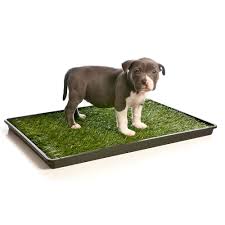 Another option is the potty grass made of soft, synthetic turf. Some have anti-microbial odor control with pans underneath. There are many different manufacturers. I personally have never tried the turf. They are normally used for potty training. They are said to be lightweight and easy to clean.
Another option is the potty grass made of soft, synthetic turf. Some have anti-microbial odor control with pans underneath. There are many different manufacturers. I personally have never tried the turf. They are normally used for potty training. They are said to be lightweight and easy to clean.
All Natural Remedies
A proper diagnosis of your dog’s incontinence is very important, since the treatment will differ depending on the cause. Diagnosis usually consists of a medical history and physical exam, urinalysis, urine culture, blood work, X-rays and possibly ultrasound.
Once the diagnosis is established, treatment can begin. Surgery may be recommended depending on the condition. If an infection is present, antibiotics may be dispensed. If no specific diagnosis is found, incontinence drugs such as as estrogen or phenylpropanolamine may be prescribed.
Holistic Therapies:If the dog has undiagnosed hormonal or neurological incontinence, holistic treatments may be effective. There’s a theory that incontinent dogs leak urine due to an injury in the lumbosacral area. It’s thought this injury may arise from excessive stretching when the dog is on her back for a spay surgery, or from excessive exercise.
Chiropractic: Adjustments, particularly to the sacram, can restore the spine to it’s natural alignment and relieve pressure on the nerves so they function more efficiently, thereby stopping the incontinence. Sometimes, only one treatment eliminates the problem, but three to five treatments are commonly needed.
Acupuncture: Stimulates the nerves to restore normal function. Again, three to five treatments are generally effective, particularly if combined with herbal remedies.
Herbals: If the animal has recurrent urinary tract infections, herbals can help. Combinations of stoneroot, marshmallow, echinacea, and dandelion can eliminate infections.
For true undiagnosed incontinence or hormonal incontinence, Chinese herbal remedies can be used. One that works well for young dogs is Suo Quan Wan. With all Chinese herbals it is important to work with a veterinarian who can diagnose and prescribe the herbs appropriately.
It is not unusual for a young dog diagnosed with hormonal incontinence to be able to gradually stop the herbs after taking them for a few months.
Urinary incontinence is more than just an inconvenience. Because it has so many different causes, some more serious than others, it’s important to have your pet examined by a veterinarian. A successful resolution to the problem depends on the right diagnosis and treatment.
Conventional treatment usually involves a course of antibiotics. However, antibiotics are not enough. UroMAXX liquid was formulated to assist vets with the difficult task of treating these infections. It’s used in conjunction with antibiotics and continued afterwards. The product helps with incontinence, discourages oxalate crystal formation and strengthens the urinary tract. Made in the US, it’s active ingredients include cranberry juice extract, glucosamine, vitamin C, dandelion, L-methionine, cornsilk powder, nettle and uva ursi.
Janice Huntingford, DVM
Elle Harris CPT






